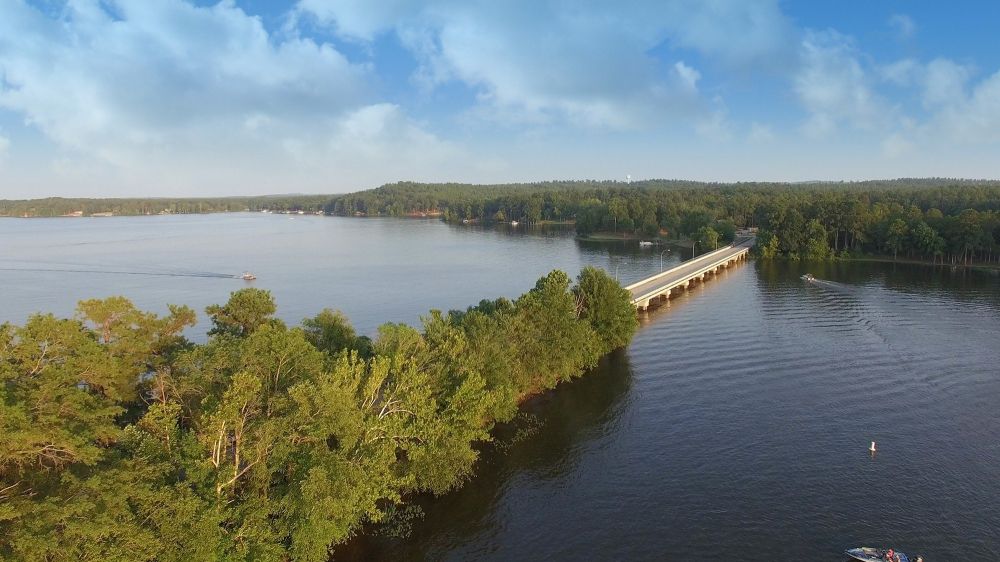Steeped in History
Pines, Ponds and Pastures
Fairfield County is rich in history. From the longest running clock in America to colonial buildings, the County has many historical attractions.
Arrowheads and Hunting Grounds
Located in the upper Piedmont region of South Carolina, Fairfield County, with its rolling hills and fertile valleys, is well-known for its picturesque scenery. The County is also known for its “pines, ponds and pastures” and as a place for people to enjoy living in a serene country atmosphere. The County is steeped in history and populated by people proud of their heritage. Fairfield County has over 100 historical buildings, churches and homes. And scattered throughout the picturesque county are monuments and memories that speak of the unique traditions and culture of the area and the Upcountry.
Situated between the Broad River on the west and the Wateree River (now Lake Wateree) on the east, the area was hunting ground for several Indian tribes. Arrowheads and pieces of Indian pottery can still be found on the banks of these bodies of water.

The Town of Winnsboro
The name of the town was changed to “Winnsboro” and incorporated in 1832. The first settler to come to the area was Thomas Nightingale. His love of horses drew him in 1740 to a “cow-pen” establishment about five miles from where a town began. Other settlers came in the middle of the 18th century. These were primarily Scotch-Irish, a proud, religious people with a strong belief in education, but also included Germans, English and Huguenots. “Winnsborough,” settled on land owned by the Winn family, had about 20 houses when it was occupied during the Revolutionary War by British soldiers under Lord Cornwallis. The British camped in the town from October, 1780 to January, 1781. Richard Winn, John Winn and John Vanderhorst led “Winnsborough” to be chartered in 1785 and made the seat of justice for the Fairfield District. Mount Zion Institute in Winnsboro was the first school to be established in the South Carolina Upcountry. Begun in 1777, Mount Zion was the forerunner of other schools in evidence until public schools were mandated by law in 1878.
The occupation of Winnsboro by Lord Cornwallis during the Revolution only interrupted classes. A granite marker on the campus is a reminder of his encampment. Mt. Zion did not close during the War Between the States, but classes were relocated to the Baptist Church and other buildings when it was taken over for a military hospital. Federal troops occupied the building late in the war. The school continued in operation as an elementary and high school for many years and later as an elementary school. The facility was closed in 1991.
South Carolina’s General Assembly authorized Winnsboro’s town fathers to build a market house that “shall not be of greater width than 30 feet” to allow 30 feet of wagon travel on either side. The narrow building was modeled after Independence Hall in Philadelphia and built on the site of a duck pond. A clock was added in 1837, and the building has since been known as the Town Clock. Residents boast the clock is the longest continuously running clock in the United States.
The County Courthouse, across from the Town Clock, has watched Winnsboro’s daily activities since 1823. Designed by South Carolina architect Robert Mills, the courthouse houses records dating as far back as the middle 1700s. Fairfield County has numerous churches, some of which have been in existence for over 200 years. Perhaps the most famous church, built in 1788, is the Old Brick Church, where the Synod of the Carolina for the Associate Reformed Presbyterian Church was organized in 1803. A note penciled on the wall of the Old Brick Church is testimony to a Union soldier’s regret at the church’s floor boards being taken up to build a crossing over the nearby river for General Sherman’s troops. The second largest town in the County, Ridgeway, was originally know as “New Town”. The name was changed when the owners of Charlotte and South Carolina Railway decided not to build the railroad on the Camden route but to use the “ridge way”. Until the early 1900’s, agriculture was the primary economy.
Industry in Fairfield
The early settlers in the mid-1700’s brought cotton to the County, and it remained the main crop until depletion of the soil and boll weevil called the industry to a halt in the 1920’s. Granite deposits in the County led to the early development of quarrying. Winnsboro blue granite, “The Silk of the Trade,” is used worldwide in buildings and monuments. The excellent hunting and fishing that the Indians enjoyed still exist today. Fairfield County, with an abundance of deer and wild turkeys, is a focal point for sportsmen.
Industry has been a part of Fairfield County life since a cotton mill was put in to operation in the late 1800’s in the southern area of Winnsboro. The mill became a part of US Rubber Company and is now owned by Performance Fibers Group. The recent location of other industries such as Hacker Instruments, Elite ES, Ruff&Tuff Electric Vehicles and Guardian Fiberglass in the Winnsboro area have further stimulated the local economy. Additionally, in order to facilitate economic growth in the County, a number of years ago the Fairfield County Council had the foresight to purchase property near I-77 for industrial development. That property, now known as the Walter B. Brown I and Walter B. Brown II Industrial Parks, is home to world class industries such as Lang Mekra, Isola USA and Prime Metal Coatings.

